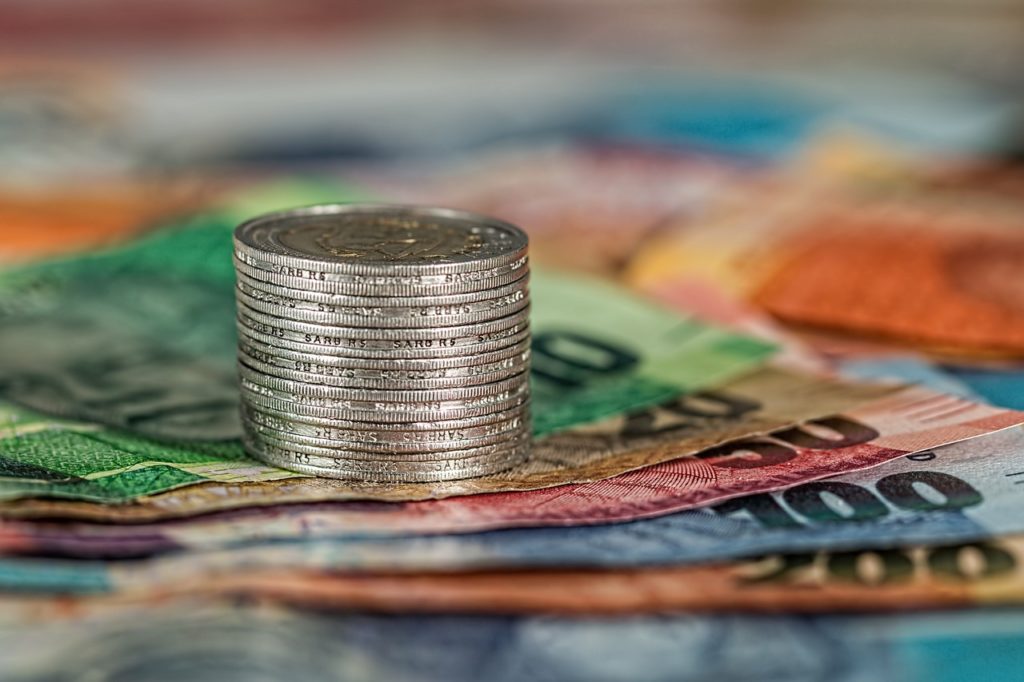In the constantly fluctuating world of currencies, we tend to look at certain currencies that manage to stay stable despite tanking economies or civil unrest: the British Pound Sterling, the Euro, the Japanese Yen, the Swiss Frank and of course, the U.S. dollar. However, some countries aren’t so lucky.
In this article, we look at some of the most inflated currencies around the world, along with some useless currencies around the world.
But before we look at inflated currencies, we need to understand why some currencies like the pound, the dollar and the yen enjoy a generally stable rate, while some go into unfathomably inflated rates.
Currency Devaluation
There’s a reason currencies like the dollar are stable: it’s a reflection of its country’s economic stability, or, in some cases, predictability. While no country is exempt from economic downturns, economic depression, or political instability, the countries with the strongest currencies are usually the countries that have:
- Stable economies that render most economic downturns to be negligible
- Stable socio-political situations (e.g. not embroiled in civil war)
- A predictable outcome if met with economic downturn or political instability
In most cases, world currencies are often contrasted with the U.S. dollar: while not the most valuable of the world’s currencies, it is one of the most recognizable and, despite various stock market plunges over the past decade, still have an economy stable enough to be a benchmark.
Currencies can devalue because of the same things strong economies are largely immune against: severe market fluctuations, socio-political strife, government sanctions, and corruption, among other things. When this happens, companies with a weak economy will have a deficit of payments, creating inflation that renders their money severely undervalued, and in some cases, useless.
In some cases, like Greece in 2009, a country’s currency can devalue because of either an inability or unwillingness to pay off foreign debt, causing neighboring countries and trade partners to impose sanctions and embargoes that further drive that countries currency down the drain.
As of the 4th quarter of 2019, these are some of the world’s most inflated currencies or countries with the highest inflation.
Venezuelan Bolivar
When people ask what country has the worst inflation, Venezuela has always ranked pretty high on the list.
Its inflation rate has reached 1 million percent over the years, making Venezuela the country with the highest inflation rate in the world.
Venezuela’s currency, the bolívar, has been in freefall since 2015. The country is in the middle of an economic crisis, and food and medicine are scarce.
The government has tried to combat inflation by printing more money, but that has only made the problem worse. In 2018, the government introduced a new currency, the sovereign bolívar.
But the sovereign bolívar has also lost value quickly, and inflation continues to spiral out of control. As a result, prices for basic goods have soared, and many Venezuelans can no longer afford to buy food and other necessities.
This level of inflation is also called hyperinflation. This kind of inflation usually occurs when the government overspends which is often the result of war, socio-economic factors that decrease government funding or change in regime.
Currency code: VES or VEF
Exchange Rate: 1 USD = 571,822 VEF
Turkish Lira
The Turkish Lira is one of the most inflated currencies in the world. As of 2022, it has an inflation rate of 73.5%. This means that the prices of goods and services in Turkey are rising at an alarming rate.
The main reason for this is due to the country’s high levels of government debt on top of pursuing unorthodox economic policies. For example, they have decided to cut interest rates rather than increase them. This has led to a decrease in the value of the lira and has made it one of the most inflationary currencies in the world.
As of July of 2022, 1 dollar amounts to 17.59 Turkish Lira.
Currency code: TL or TRY
Exchange Rate: 1 USD = 17.59 TRY
Sudanese Pound
Starting the year with a 340% inflation rate, Sudan ranks as the second-highest most inflated currency in the world.
The value of the Sudanese Pound has been on a steady decline since 2011 when it was pegged to the US dollar at a rate of 2.7 pounds per dollar. By January 2021, the official exchange rate had plummeted to 55 pounds per dollar. However, the black market rate is even higher, at around 150 pounds per dollar.
The high inflation rate is due to a number of factors, including the South Sudanese conflict, which has led to a decrease in oil production and exports; international sanctions; and a lack of foreign currency. The government has also printed more money in an attempt to cover its budget deficit.
Currency code: SDG
Exchange Rate: 1 USD = 456.50 SDG
Iranian Rial

As of this time, the Iranian Rial is the most inflated currency in the world, not to mention the most devalued currency in the world, which also makes it one of the weakest currencies in the world. In fact, it is so devalued that Iranians developed a system to make it easier for them to fathom the insanely huge amounts of money for simple transactions.
Because a simple cup of coffee could cost tens of thousands of Rials, Iranians use the term Toman, which is equal to 10 rials. In effect, this makes it simpler to understand the astronomically high value of things: a person buying an apple, which might cost 2,000 Rials, will instead be asked to pay 200 Toman. Although the official exchange rate pegs 1 USD to 42,000 Rial, certain black market traders will often pay close to 200,000 Rials for a single U.S. dollar.
There are several reasons why the Iranian economy is one of the most undervalued in the world: the vestiges of the Iran-Iraq War, its constant threats against Israel, its aggressive stance against Western trading partners, and the small possibility of Iran developing nuclear weapons have created an economic atmosphere detrimental to growth. Factor in trade embargoes and economic sanctions from superpowers Iran has threatened over the years, and you get an economy that is on the fast track to inflation.
Despite having rich oil deposits, the trade embargoes in place means that Iran cannot export its most precious commodity, thus creating a critical deficit that sent the national budget into a death spiral that it has yet to recover from. Add its aggressive stance against Israel and its superpower ally the United States, and Iran might not have the strength to lift itself off the ground.
But all is not lost: in 2016, the United States and the EU lifted trade sanctions from Iran that helped the economy recover immensely. Although a new round of sanctions by the American government in 2018 brought the Iranian economy back into hyperinflation, analysts hope that thawing relations between the U.S. and Iran might ease the economy somewhat.
Currency code: IRR
Exchange Rate: 1 USD = 42,105 IRR (official rate), 1 USD = ~190,000 IRR (black market rate)
Vietnamese Dong
Coming in as the second most inflated currency in the world is the Vietnamese Dong. It’s also one of the highest denominated currencies in the world, with the highest denomination bill at 500,000 VND
Because of its socialist-oriented economic model (which it enforced after it won against the U.S. in the Vietnam War), Vietnam has one of the most undervalued stock markets in the world. However, over the past decade, it has slowly been moving away from a centralized economy into a free market model, with many analysts predicting that Vietnam will become one of the most competitive economies in Asia over the next 20 years.
For now, however, more than 60% of the Vietnamese economy is controlled by state-owned enterprises, which can hinder economic growth. But with a burgeoning private sector and a rapidly growing middle-class, Vietnam might leave this list soon enough!
Currency Code: VND
Exchange Rate: 1 USD = 23,208 VND
Indonesian Rupiah

Despite having a stable economy and mostly stable socio-political climate, decades of corruption and fiscal mismanagement, not to mention a growing foreign debt and an increase in foreign-owned bonds, have put the Indonesian Rupiah as one of the most inflated currencies in the world.
It also has a very low exchange rate: 1 U.S. dollar is equal to more than 14,000 Rupiah, making repayments of foreign debt difficult, not to mention driving denominations and inflation (the highest denomination is the 100,000 Indonesian Rupiah bill).
However, increased government regulation of trading and increased fiscal measures to strengthen the national currencies have started bringing the Indonesian Rupiah back to more competitive levels, although it will take some time before it can be on the same level as its nearest neighbors Malaysia and Singapore.
Currency Code: IDR
Exchange Rate: 1 USD = 14,113 IDR
Guinean Franc
The Republic of Guinea in West Africa has one of the world’s largest deposits of Bauxite, the main source of aluminum, as well as very rich deposits of gold, diamonds, and other exotic minerals. Despite this, it’s one of the world’s weakest economies and has extremely high instances of poverty thanks to constant political instability and health issues.
Guinea was a colony of France. After its independence in 1959, the country tried to create a stable, democratic government. However, warring political factions, tribal conflicts, and an Ebola outbreak that left millions of Guineans dead have constantly stalled the creation of a stable government, and, in effect, left the Guinean economy on the ground.
Aid packages from both the United States and Europe are slowly helping Guinea create and maintain a stable market economy, and while political violence is still a problem, the past few years have seen government forces becoming more disciplined and cohesive, leading many analysts to believe that it’s only a matter of time before Guinea becomes a truly developed nation.
Currency Code: GNF
Exchange Rate: 1 USD = 9,198 GNF
Cambodian Riel
Introduced in 1995, the Cambodian Riel replaced the Indochinese Piaster, Cambodia’s former currency. Unfortunately, the Riel was introduced with a low exchange rate (mostly due to Cambodia’s then-struggling economy), which made it very unpopular with locals.
Because of its weak entry into the Cambodian market more than 2 decades ago, plus a weak economy and unchecked corruption in the government, the Riel is one of the weakest currencies in Southeast Asia, and even within Cambodia itself: most locals prefer to use foreign currencies like the U.S. dollar in everyday transactions. While the Riel itself isn’t completely devoid of value, the constant usage of foreign currencies further weakens and devalues it.
Currency Code: KHR
Exchange Rate: 1 USD = 4,101 KHR
What is the Most Inflated Currency?




